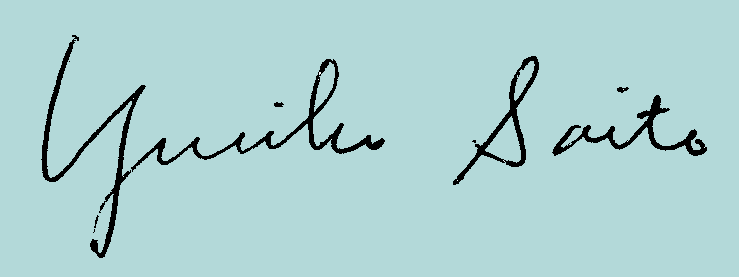Last year’s editorial started by observing that the year 2023 was tumultuous. Unfortunately, we seem to be continuing our global journey filled with uncertainties. In addition to the existential threats posed by military conflicts and climate change, particularly worrisome is the assault on democracy in many parts of the world. Like last year, we may wonder about the value of aesthetics when these pressing issues are endangering our rights, dignity, and well-being. Aesthetics suffers from a misperception that it is dispensable, eclipsed by more pressing problems affecting humanity.
At Contemporary Aesthetics we firmly believe that aesthetics and artworks have a crucial role to play in this age of turmoil and uncertainty. Artworks can be a powerful witness to human tragedies and atrocities while at the same time uniting us in the face of evil and helping us heal after natural and contrived disasters. Political activism would not be possible today without aesthetic strategies like songs, slogans, images, and gestures.
As we face increasingly serious challenges to democracy, we expect aesthetics and art to lend their power to protecting equality and justice, celebrating human dignity, facilitating true dialogue and building a community of genuine citizenry. Art and aesthetics are not an escape from life but are indispensable means of engaging life and enhancing its quality.
We published two Special Volumes in 2024: Aesthetics and Sustainability and Atmospheric Design and Everyday Aesthetics. The articles in these volumes collectively testify to the social, political, and environmental significance of art and aesthetics, reminding us of the necessity of exploring aesthetic issues that matter to living in the world today.
While Special Volumes, which we have published almost annually, provide a focused discourse, regular volumes continue to offer a diverse array of studies which define the character of Contemporary Aesthetics. We plan to keep offering these complementary approaches to promote a rich aesthetic inquiry.
Another feature that has come to define our journal is our commitment to disciplinary, cultural, and linguistic inclusivity. We make a special effort to encourage authors who may not be familiar to Anglophone readers. Although we publish exclusively in English, and we require a specific format and style that may be very different from what many authors are accustomed to, we work with contributors to make their good work available to our readers. We also try to make our review process not simply a verdictive exercise but an educational process particularly for those who are at an early stage of their career. In short, we take great care in working with authors, regardless of whether their articles are accepted for publication. We take seriously this contribution to our profession.
We are happy to report that we have received submissions from every continent except Antarctica. Submissions were received from Austria, Belgium, Brazil, The Czech Republic, Denmark, Finland, Germany, Hong Kong, Italy, Japan, Poland, Spain, Switzerland, and The Netherlands, in addition to the largely Anglophone countries: Australia, Canada, New Zealand, South Africa, the UK, and the USA. Authors’ disciplinary backgrounds included art history, clinical psychology, visual culture, fashion studies, religion, studio art, media studies, and philosophy. Our readership also continues to grow.
Our reviewers have given much time and expertise to prepare thorough and constructive reviews. I cannot thank them enough. Authors often express gratitude for the feedback from anonymous reviewers, even if their papers were not accepted. For Volume 22, the following scholars helped us with reviews: Arnold Berleant, Isis Brook, John Carvalho, Michael Cavayero, Peter Cheyne, Meilin Chinn, Rafael de Clercq, Carla Milani Damiao, Richard Eldridge, David Fenner, Brad Flicker, Ivan Gaskell, John Gibson, Alan Goldman, Lisa Heldke, Gioia Iannilli, Sanna Lehtinen, Glenn Parsons, Monique Roelofs, Kevin Ryan, Kristi Sweet, Tania Tribe, and Ryan Wittingslow.
Thinking about the future of our journal, we have asked three aestheticians to join the editorial board: Erich Hatala Matthes from Wellesley College, USA, Gioia Laura Iannilli from the University of Bologna, Italy, and Elisabetta di Stefano from the University of Palermo, Italy. All have an impressive record of publications and professional activities, and we are excited to have them bring a younger and newer perspective to Contemporary Aesthetics.
As always, I want to thank Arnold Berleant for always being available to lend his wisdom and advice based upon his experience of running Contemporary Aesthetics for the first fifteen years. John Carvalho, Associate Editor, has been my steady rock. I am grateful for his timely and expert advice, as well as helping with some aspects of my work as Editor. Sanna Lehtinen, Assistant Editor, has also been a steady help for which I am thankful. The board members have also given me a constant source of inspiration, encouragement, and support. Running this journal is a true team effort.
Last but not least, Lynnie Lyman, our assistant, is the one who holds our operation together with an expert technical hand and good humour. She is what I call our lifeline together with our copy editor, Anne Berleant, whose work remains invisible to the public but is greatly appreciated by our authors.
We are determined to continue our contribution to the development of aesthetics discourse. We hope you continue your support for our journal by using the articles for teaching, conducting your own research, and enriching your intellectual life, as well as submitting your work to us. Please encourage your students and colleagues to do the same.
Respectfully,

Yuriko Saito, Editor
